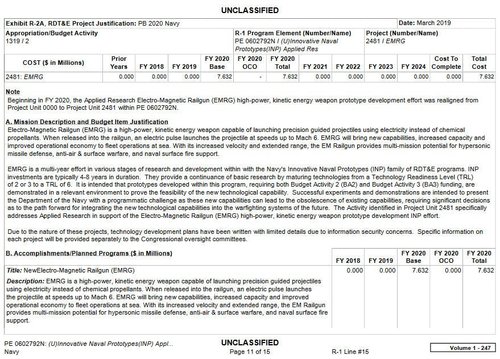Any estimate how many $billions those changes would cost, just the railgun firing Its 25 lb? shell (Iowa battleships had real firepower with its 16" shells of 1,900 and 2,700 lbs). EMRG FY2020 budget $7.6 billion, to move from TRL 2/3 to TRL 6, a 4 to 8 year program and then needs to be at TRL 9 to install on ship, maybe IF development a success will be installed on the LSC for IOC of ~2035.
@AA/AWW-14(V) The DOT&E Dec 20, 2019 reported that Navy has encountered severe problems with the special to Zumwalt SM-2 Blk IIIAZ and ESSM's to work with its SPY-3 radar and were not operationally effective, presume why not buying more than test quantities as they don't work.
As said my view just throwing good money after bad into the Zumwalt $24 billion black hole.
Just to make things clear:
-Technology Readiness Level 1: Basic principles observed and reported
-Technology Readiness Level 2: Technology concept and/or application
-Technology Readiness Level 3: Analytical and experimental critical function and/or characteristic proof of concept formulated
-Technology Readiness Level 4: Component and/or breadboard validation in a laboratory environment
-Technology Readiness Level 5: Component and/or breadboard validation in a relevant environment
-Technology Readiness Level 6: System/subsystem model or prototype demonstration in a relevant environment
-Technology Readiness Level 7: System prototype demonstration in an operational environment
-Technology Readiness Level 8: Actual system completed and qualified through test and demonstration
-Technology Readiness Level 9: Actual system proven through successful mission operations
If you take the railgun currently at White Sands and simply bolted it onto a ship for demonstration and test, that would rate level 7.
The railgun development budget to date is likely to be a $billion or less (to get to TRL 6 in the desert). To get to a fully operational weapon deployed on ships could definitely take $billions but would be applicable to all future ships with the required electrical capacity.
The Iowa guns as big as they were could not reach out more than 20-30 miles. The railgun at 64MJ would go 200 miles and reach into space where it could be used for antimissile intercepts. At $20-30K per shot, the railgun projectile is dirt cheap compared to everything else (other than DEW). And of course, there are no stored explosives required.
Cost killed the Zumwalts. Developing unique weapons for them is not being contemplated but incorporating weapons that can be installed on future ships would keep them useful. They would provide immediately available platforms with the requisite electrical power and size to get early experience with railguns/DEW/Prompt Global Strike.
I see no political support for junking the Zumwalts and Navy support also looks consistent (DOTE wouldn't be DOTE if they weren't saying everything is bad and doesn't work). The introduction of unmanned surface platforms has introduced uncertainty on how the fleet composition will look. Still, if you want a large, manned platform optimized to operate in high threat theaters, the Zumwalt design is still superior to anything else out there.





